Seafood is not only a delicious and healthy protein source, but it also offers a diverse range of flavors and textures. Not all seafood is created equal – the quality and freshness of the catch can significantly impact the taste and nutritional value of the dish.
As a result, selecting the best seafood can be a daunting task, especially for those who are not familiar with the different varieties. That’s where our guide comes in. In this blog post, we will be exploring the best fresh seafood dishes, from ocean to plate.
We will take a deep dive into the world of seafood and highlight some of the most delicious and nutritious seafood dishes you can order at restaurants or prepare at home. We will also share tips on how to choose the freshest seafood and what to look for when buying it at the grocery store or seafood market.
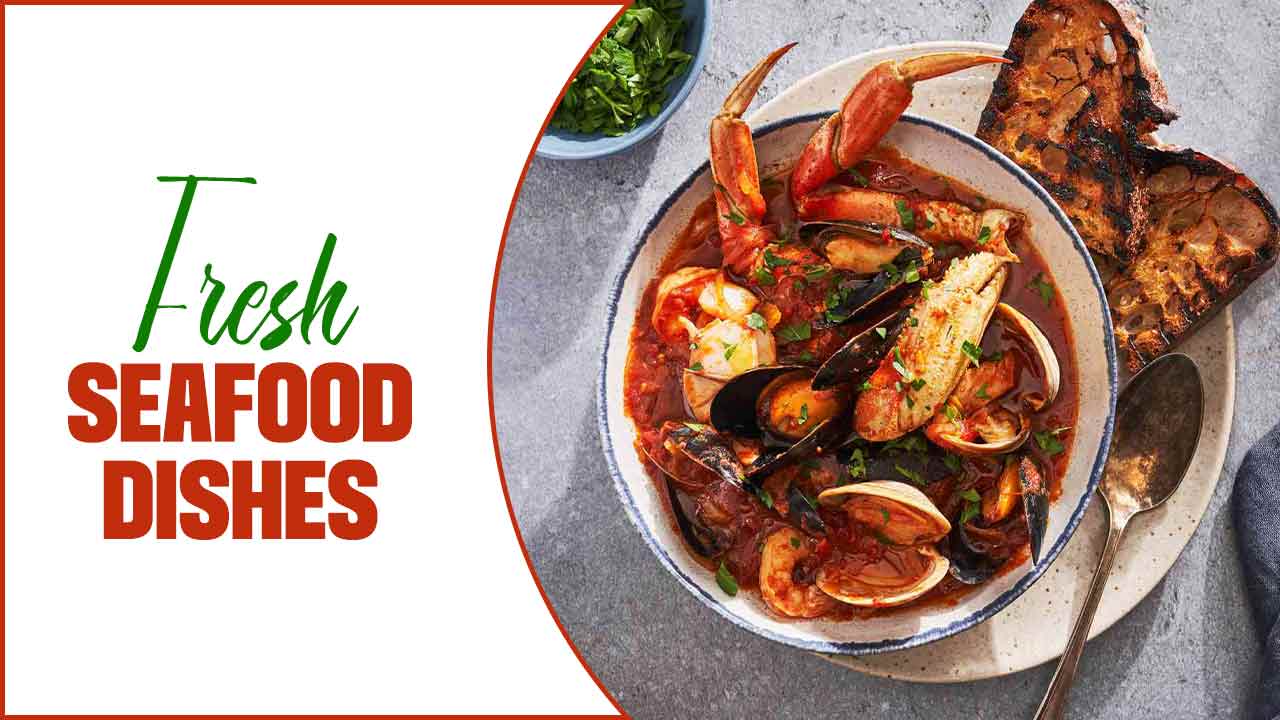
List Of Delicious And Nutritious Fresh Seafood Dishes

Fresh seafood dishes offer a delightful combination of flavors, textures, and nutritional benefits. Here are some delicious and nutritious seafood highlights that you can enjoy:
- Grilled Salmon: Grilling salmon brings out its natural richness and creates a smoky flavor. It contains omega-3 fatty acids, high-quality protein, and essential vitamins like vitamin D and B12.
- Shrimp Stir-Fry: A quick and easy dish, shrimp stir-fry combines succulent shrimp with a variety of colorful vegetables. Shrimp is low in calories and a good source of lean protein, while veggies add vitamins, minerals, and dietary fiber.
- Tuna Poke Bowl: A popular Hawaiian dish, a poke bowl typically features fresh chunks of raw tuna marinated in soy sauce, sesame oil, and other seasonings. It’s often served over a bed of rice or salad and topped with vegetables and other flavorful ingredients.
- Lobster Bisque: This creamy and indulgent soup showcases the delicate flavors of lobster. Made with a rich base of lobster stock, cream, and seasonings, it’s a luxurious treat. Lobster is low in fat and carbohydrates while being a good source of protein, vitamins, and minerals.
- Grilled Swordfish Steak: Swordfish has a firm texture and a rich, meaty flavor that holds up well on the grill. It’s a good source of lean protein and contains essential nutrients like selenium, niacin, and vitamin B12.
- Ceviche: Ceviche is a refreshing dish made with raw fish or seafood, such as shrimp or white fish, marinated in citrus juices like lime or lemon. The acid in the citrus juices “cooks” the seafood, resulting in a flavorful and tangy dish.
- Steamed Mussels: Steamed mussels make a delicious and light seafood option. They are high in protein, low in fat, and an excellent source of vitamin B12, iron, and other minerals.
Preparing Seafood For Cooking
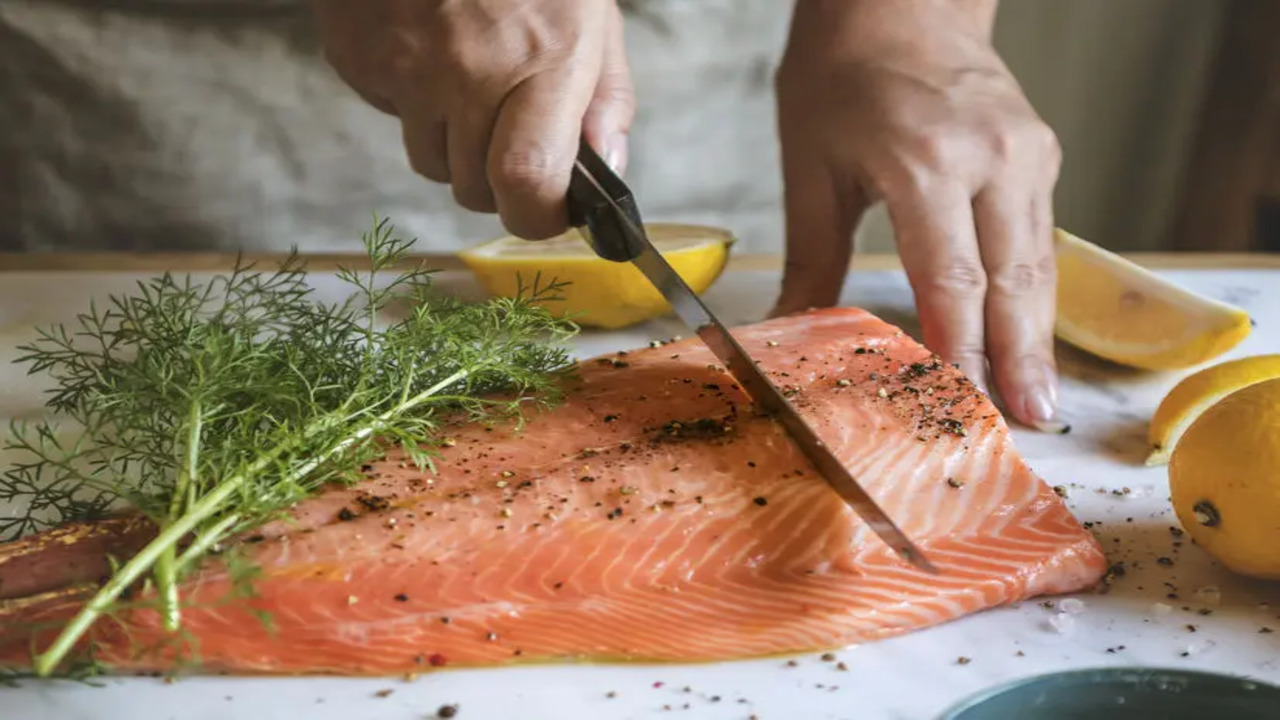
Preparing seafood for cooking is essential to ensure that the end product is healthy, flavorful, and safe to eat. First, the seafood must be purchased from a reliable source. When shopping for seafood, look for fresh, firm, and shiny fish or shellfish. It’s also important to check the seafood’s expiration date and storage conditions before purchasing. Once you have the seafood, rinse it under cold water and pat it dry with a paper towel.
For shellfish like clams, oysters, and mussels, scrub the shells with a brush to remove dirt and debris. Next, depending on the type of seafood you have, you may need to remove shells, scales or bones. For example, for fish, you may need to remove the scales and gut the fish. For shellfish, you may need to remove the shells or cut the meat from the shell. Finally, marinate the seafood with your preferred flavors, such as lemon, herbs, or spices, before cooking.
Cooking Techniques For Seafood
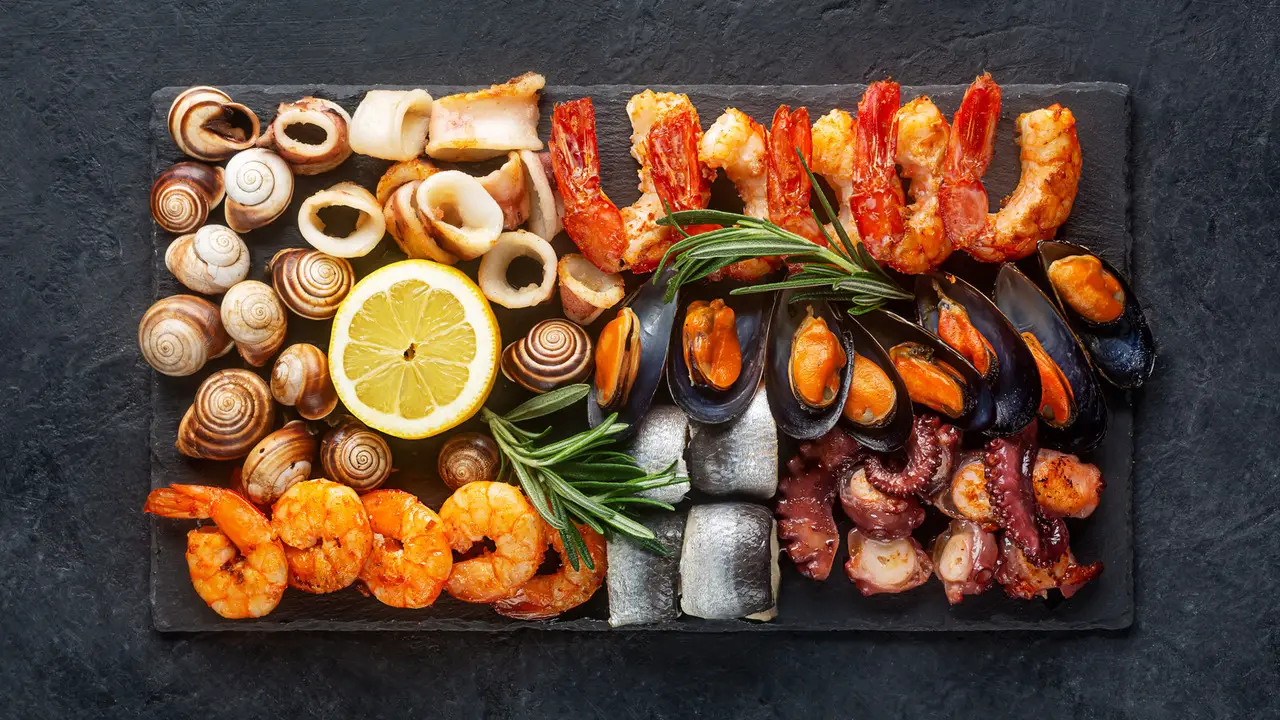
Cooking seafood often requires a different set of techniques compared to other types of meats. One of the most important things to remember when cooking seafood is not to overcook it. This is especially true for delicate fish like soles or flounder. To ensure that seafood remains moist and tender, cooking it quickly over high heat is best. Grilling, broiling, and pan-searing are all great techniques for seafood. Another useful tip is to marinate seafood before cooking, as this can infuse it with flavor and help to tenderize it.
Steaming is another popular cooking technique for seafood as it preserves the natural flavors and nutrients of the fish, making it a healthier option. When boiling or simmering seafood, it is important not to overcrowd the pot as this can lead to uneven cooking. Another technique for cooking seafood is poaching, which involves cooking the seafood in a flavorful liquid. This method is particularly good for delicate fish and shellfish.
Pairing Wine With Seafood
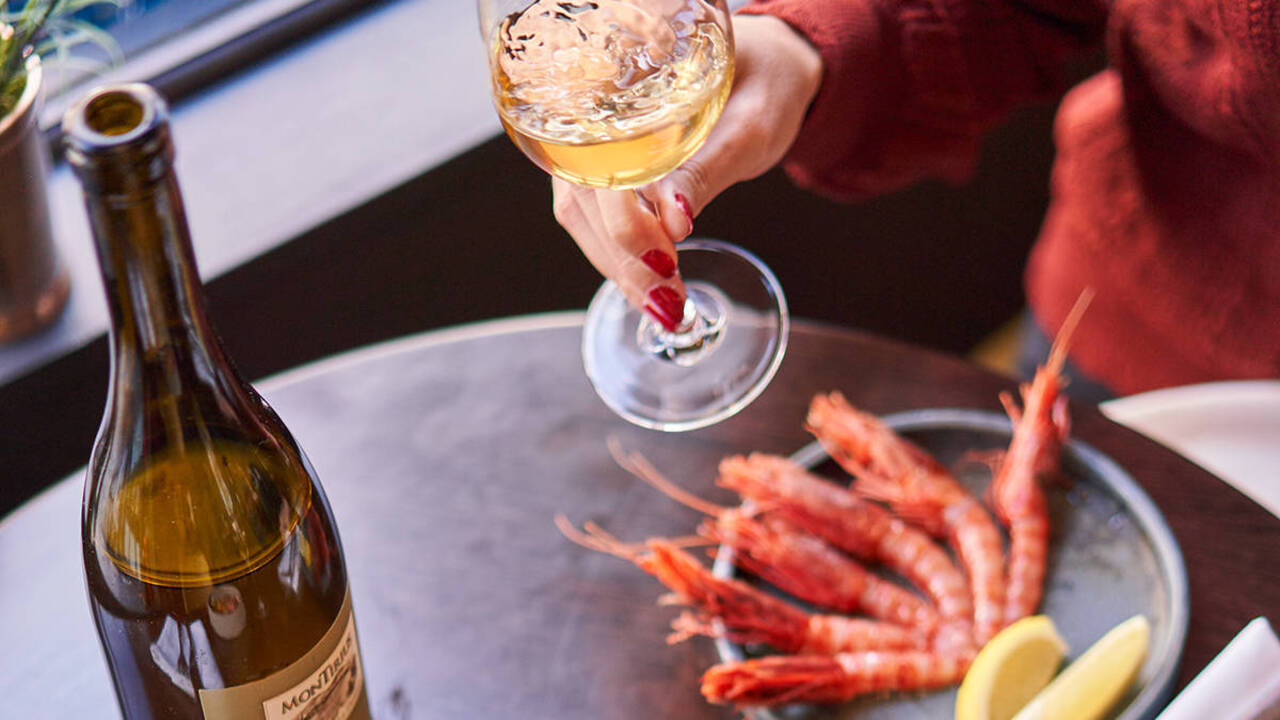
Pairing wine with seafood is often considered to be a difficult task. However, with a little knowledge, it can be a delightful experience. The best rule of thumb is to match the weight of the wine with that of the seafood. Light-bodied white wines like Sauvignon Blanc and Pinot Grigio are perfect for delicate seafood such as oysters, clams, and shrimp. Medium-bodied whites like Chardonnay and Chenin Blanc are great for dishes like crab and lobster.
A full-bodied white wine like Viognier or a light-bodied red like Pinot Noir can work wonders for rich and meaty seafood like salmon and tuna. If you’re a fan of spicy seafood, a slightly sweet wine like Riesling or Gewurztraminer can help balance the heat. Regarding shellfish like scallops and mussels, Champagne, Prosecco, or other sparkling wines can be a perfect match.
Tips For Buying And Storing Seafood
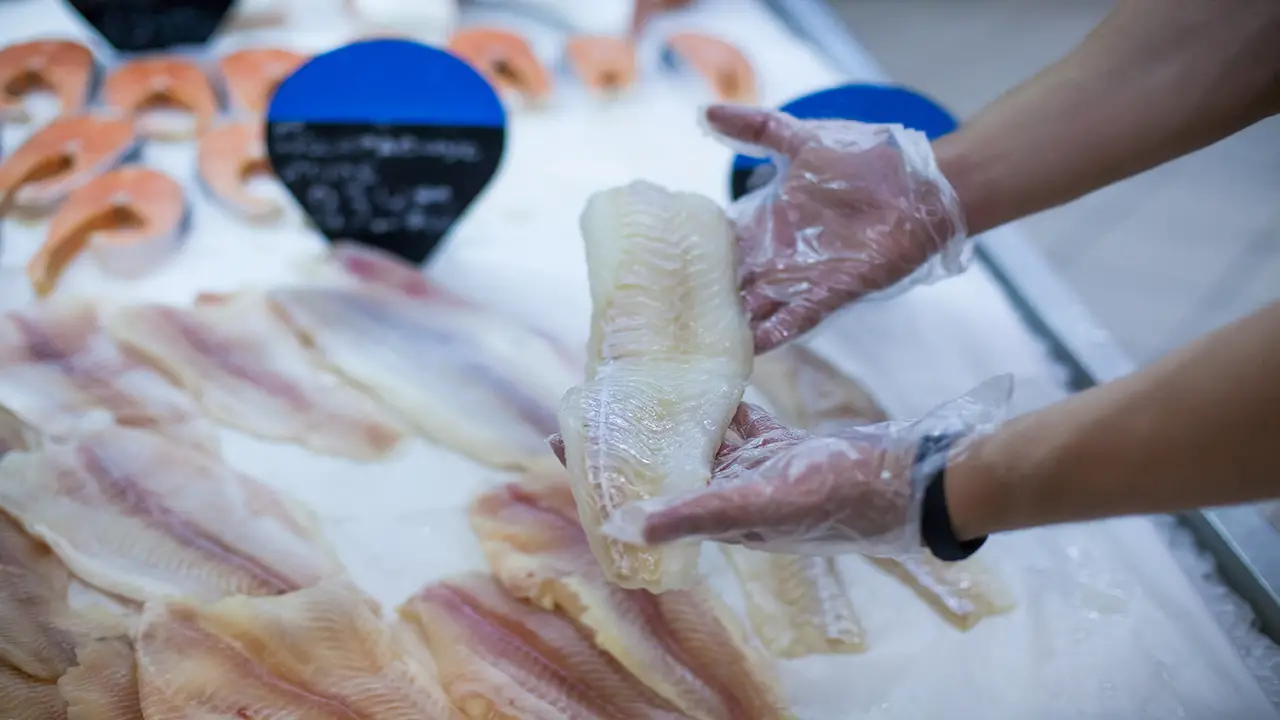
Buying and storing seafood can be a bit intimidating, especially for those new to cooking seafood. However, with a few tips and tricks, you can always have fresh and delicious seafood on hand. When buying seafood, always look for a reputable fishmonger that sources their fish sustainably. Fresh seafood should have a bright, shiny appearance, clear eyes, and firm skin. If buying frozen seafood, ensure it is well-wrapped and has no signs of freezer burn.
When storing seafood, it is important to keep it cold. Store fresh seafood in the refrigerator on ice or in a tightly sealed container. Frozen seafood should be kept frozen until ready to use. It is also important to use seafood within a few days of purchase to ensure optimal freshness. Some seafood, such as shrimp and crab, can be cooked and frozen for later use. Finally, properly thaw seafood before cooking by placing it in the refrigerator overnight or under cold running water.
Sustainability And Ethical Practices In The Seafood Industry
The seafood industry has a significant impact on global economies and the environment. However, the industry has been plagued with unethical practices such as overfishing, illegal fishing, and labor exploitation. As consumer awareness increases, the industry shifts towards sustainability and ethical practices.
Companies are beginning to prioritize environmentally responsible practices, such as reducing bycatch and protecting endangered species. Additionally, companies are focusing on the ethical treatment of workers, such as ensuring fair wages and safe working conditions.
Sustainable practices in the seafood industry involve implementing measures that maintain the health of fish and marine ecosystems. These practices include using equipment that is less harmful to the environment, adopting fishing techniques that reduce bycatch, and monitoring fish populations to prevent overfishing. Ethical practices in the seafood industry include ensuring workers are treated fairly and respectfully. This involves providing safe working conditions, paying fair wages, and ensuring workers access to adequate healthcare.
Conclusion
Fresh seafood dishes are delicious and packed with essential nutrients for a healthy lifestyle. Chefs have been creating innovative and delectable seafood dishes for centuries, and the trend only seems to be growing in popularity.
Whether you prefer classic seafood staples like lobster or crab or enjoy experimenting with lesser-known options like octopus or sea urchin, there is no shortage of fresh seafood options to satisfy your palate. So, the next time you visit a seafood restaurant or cook at home, don’t hesitate to explore the vast array of seafood dishes available.
FAQ
1.What Are Some Popular Types Of Seafood Dishes From Different Regions Of The World?
Ans: Here are some popular types of seafood dishes from different regions of the world:
- Japan: Sushi, sashimi, tempura, and grilled fish
- Italy: Linguine with clams, seafood risotto, and grilled octopus
2.How Can You Tell If Seafood Is Fresh And Safe?
Ans: Look for shiny, firm flesh with no discolouration or dry spots. The eyes of whole fish should be clear and bright, not cloudy or sunken.
3.What Creative Ways To Prepare And Serve Fresh Seafood Dishes For A Dinner Party?
Ans: Create a tower of fresh seafood on ice, including oysters, shrimp, crab legs, and lobster tails. Serve with a variety of dipping sauces.
4.What Are Some Healthy And Flavorful Cooking Techniques For Seafood, Such As Grilling Or Poaching?
Ans: Some healthy and flavorful cooking techniques for seafood include grilling, poaching, and baking. Grilling seafood can add a smoky flavor, while poaching can help retain the natural flavors and juiciness of the seafood.
5.How Can You Pair Different Types Of Fresh Seafood With Complementary Sides And Sauces To Create A Balanced And Satisfying Meal?
Ans: Start by selecting your fresh seafood. Consider the flavor and texture of the seafood and how it will work with the sides and sauces you will pair with it. The type of seafood you choose will determine the best sides and sauces to pair with it.

I’m a writer and blogger who loves to talk about entertainment, culture, and relationships. I love to share my thoughts and insights on these topics, and I’m always looking for new ways to engage with my readers. I’m also a big fan of learning new things, so I’m always exploring new areas of interest.
